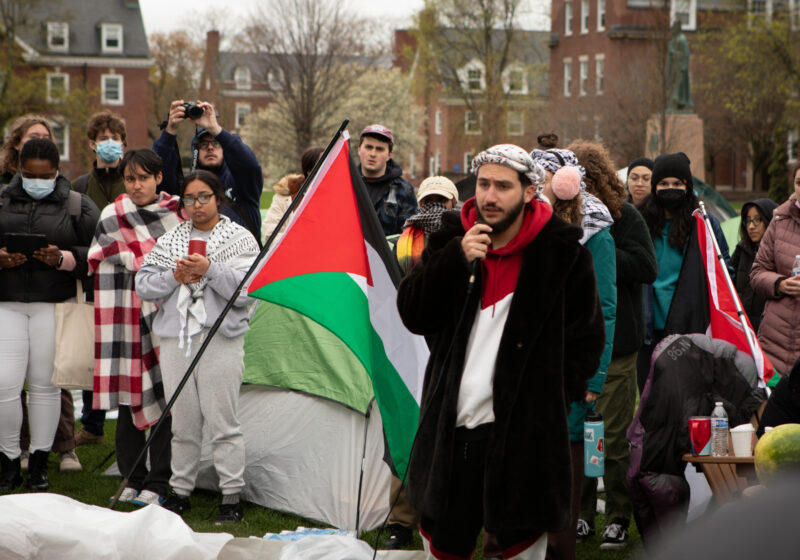Here’s the thing about Todd Theatre plays – they’re insane. But for some reason, they always seem to work. And although the director’s intention may not be clear, Todd Theatre plays will usually shock, awe and confound their audience to the point where they can’t help but enjoy themselves. “Major Barbara,” Todd’s newest show, does exactly that.
To start off, “Major Barbara” is a traditional British play written by George Bernard Shaw in 1905 about Barbara Undershaft, the leader of the Salvation Army, back when it was a Christian organization devoted to the salvation of lost souls. Todd’s production is performed in the style of Japanese Kabuki theater – an art form from the 1600s that features peculiar, stylized movements and live music.
I know what you’re thinking – red flag right away. But for some reason, after sitting through the almost three hour production, I found the combination of traditional British theater and the eccentricities of Kabuki to be like French fries dipped in frosting – odd sounding at first and repulsive to some, but really delicious once you try it. Or, so I’ve heard.
‘”Major Barbara’ is actually a pretty scary text masked in all of this English society stuff,” Guest Director Brooke O’Harra said. “So through Kabuki, we got rid of all the stage directions and looked for the inherent violence of the play.”
The result is otherworldly – a play that feels like a nightmare that you have absolutely no control over – a live musical horror movie. The actors wear Japanese face paint – white faces with exaggerated features painted in black. There is live music – viola and percussion – throughout the piece that corresponds with the actors’ movements. The whole play is one long dance, beautiful and haunting.
The technicality of “Major Barbara” is some of the best that I’ve seen in my four years at UR. The actors manipulate hand-held video cameras, cameras inside mugs of water and cameras on the tops of pens, all which feed live to TV sets all around the theater. The result is a fourth dimension of experience – another window into the characters’ minds and this ridiculous world that they’re living in. And it’s also just so cool.
The cast of “Major Barbara” is strong, led by sophomore Jonathan Weatherbee, the stand out star of the show as Barbara’s father who claims that all you need for religious salvation is money and gunpowder. Weatherbee is supported by an excellent ensemble that moves together as if they were born to do so.
“The lines are there – the story is clear,” O’Harra said in response to those who might claim to not understand the whole thing. “There’s nothing more to get with this production.”
As enjoyable as it is, I wouldn’t say the story is necessarily clear. My experience with Todd Theatre has shown that good theatre isn’t always about the story. Rather, it’s about the underlying themes and ingredients, in this case religion, money, violence, salvation and the frosting that goes on top – the sound, the lights, the costumes and the technology. The plot seems to be expendable.
Don’t go see “Major Barbara” for the very beginning or the very end. The beginning is off-putting as you adjust to the style and the very end is extraordinarily anti-climactic. Don’t go see it for the plot, the dialogue or the story.
Go see it for the impressive performances, the seamless choreography and the amazing technical aspects. See it because it’s exciting and different and it challenges your beliefs. See it because theater isn’t always this consistently impressive outside of Todd Theatre in the real world. And really, see it because it’s one of the best things you can do with yourself on a Friday or Saturday night.
“Major Barbara” will be playing at Todd Theatre from Feb. 24 to March 5 for $6.
Mittelman can be reached at dmittelman@campustimes.org.


